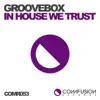Groovebox Biography
A groovebox is a self-contained electronic or digital musical instrument for the production of live, loop-based electronic music with a high degree of user control facilitating improvisation. The term "Groovebox" was originally used by Roland Corporation to refer to its MC-303, released in 1996. The term has since entered general use, and the concept dates back to the Movement Computer Systems Drum Computer in 1981 and Fairlight CMI Page R in 1982. A groovebox consists of three integrated elements. One or more sound sources, such as a drum machine, a synthesizer, or a sampler A music sequencer A control surface that is a combination of knobs (potentiometers or rotary encoders), sliders, and/or buttons, and display elements (LEDs and/or an LCD screen) The integration of these elements into a single system allows the musician to rapidly construct and control a pattern-based sequence, often with multiple instrumental or percussion voices playing simultaneously. These sequences may also be quickly chained together into a song in a live performance. Grooveboxes allow sequences and songs to be saved, retrieved from memory, and inserted into the current performance whilst playing. In some cases, an entire musical performance may be created by a single player with a single groovebox. In other cases, the groovebox is simply one instrument amongst many. This is reflected by the large variety of grooveboxes available, ranging from Roland's lower-end MC and SP products which include basic sequencing and sampling capabilities, to Akai's flagship MPC 4000 and 5000, Yamaha's RS7000 or Roland's own MV-8800 which include features such as high-end sampling, high-polyphony synthesizers, and extensive sequencing, connection and storage possibilities. Groovebox style instruments have facilitated many performers, both amateur and professional, who may have previously been unfamiliar with electronic music, to explore the genre. Whilst some in the genre initially derided these instrume...

















































































